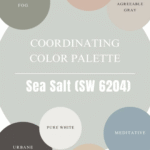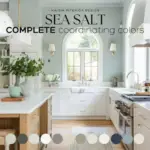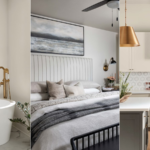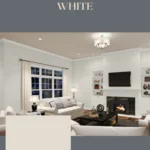Embarking on the captivating journey of home transformation?
Yet, in this vast canvas of color possibilities, the quest for the perfect hue can be a daunting task.
The multitude of choices, each perfect for attention, leaves one grappling with decisions that goes well with personal taste and aesthetic preference.
Among these options, look what I’ve found – the verdant hues of green.
Capturing the essence of nature’s tranquility and injecting it into the heart of our homes.

Pro Grade Paint Roller Kit, Brush & Roller for Professionals & Homeowners
Perfect for smooth finishes on your interior walls. Ideal for home improvement enthusiasts!
Buy Now on AmazonTwo revered green tones – olive and sage – each a protagonist in the symphony of interior aesthetics.
So, What’s the best pick – The Sage Green Vs Olive Green?
Hold on! – Don’t rush to conclusion.
The time has come to paint your walls with the perfect shade, you do so with confidence and clarity.
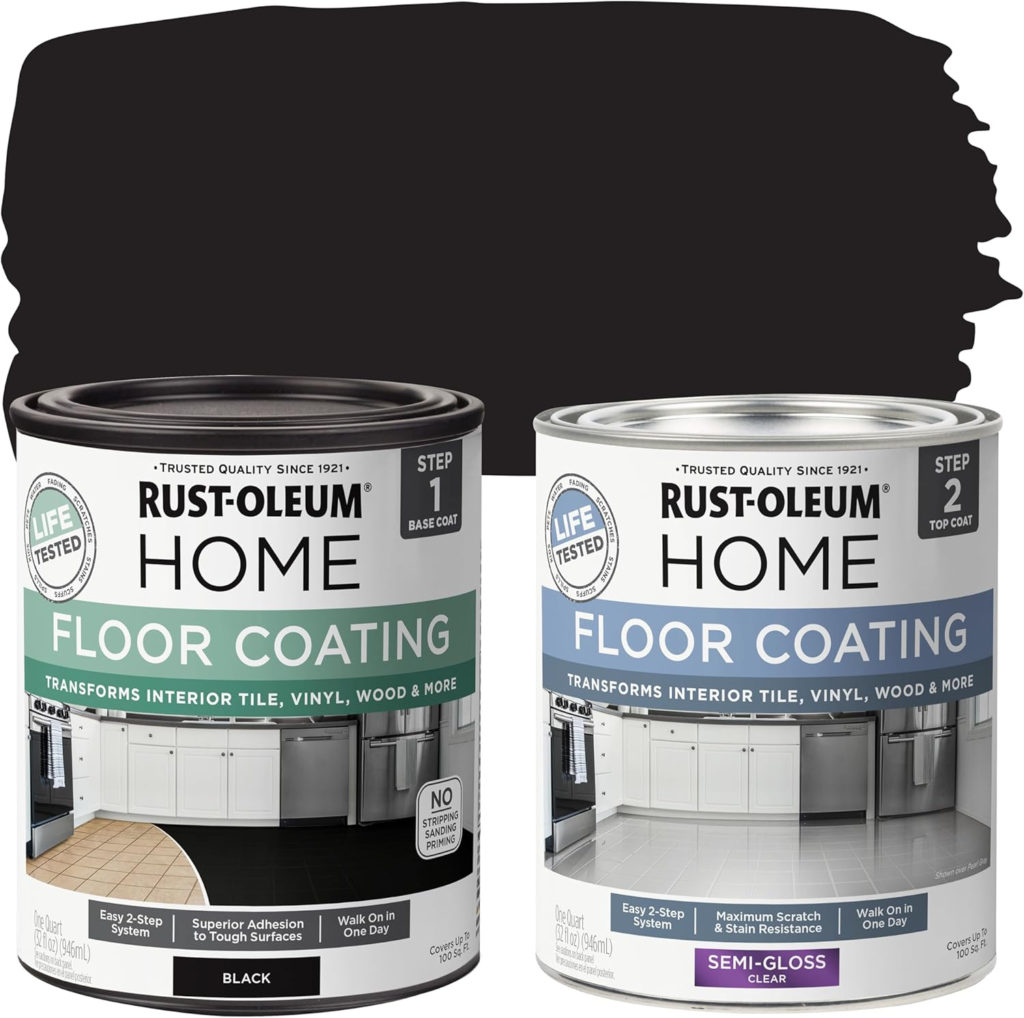
Rust-Oleum 367605 Home Interior Floor Coating Kit, Semi-Gloss Black
Ideal for updating outdated flooring at a fraction of the cost of replacement and adheres without stripping, sanding or priming.
Buy Now on AmazonAnd that takes time and careful considerations. So, are you ready?
A secret?
– a key to unraveling the enigma of choosing between olive and sage green.
Stay with me until the last, for the guide of color selection.
Let’s make your home – the canvas for the masterpiece of your personal style.
- Olive Green Vs Sage Green
- Olive Green – What hue is Olive Green?
- What is Sage Green?
- How to choose between Sage Green Vs Olive Green?
- Choosing Accent Colors for Olive Green and Sage Green
- Olive Green Paint Colors
- Sage Green Paint Colors
- The bottom line
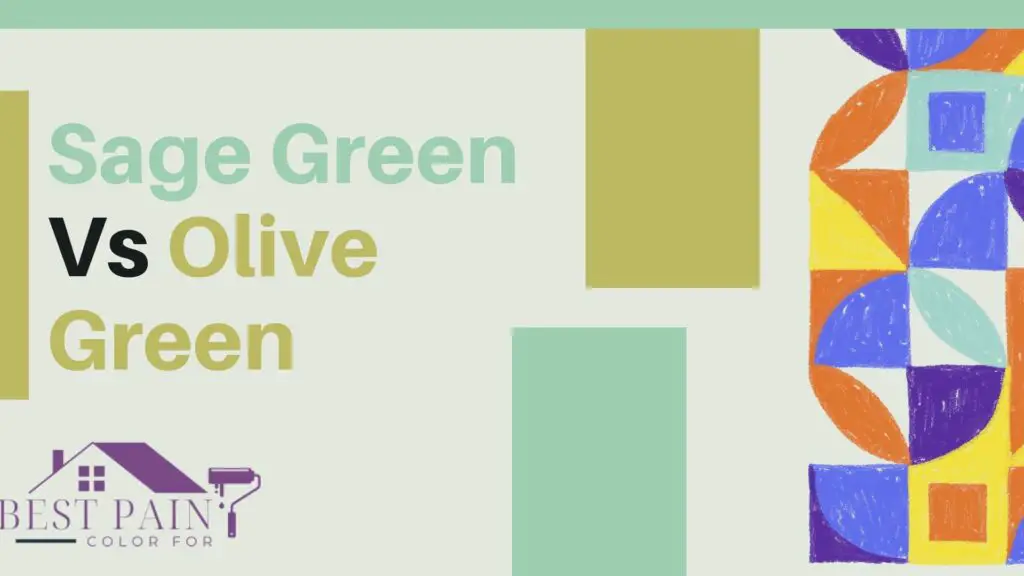
Olive Green Vs Sage Green
Olive and sage green are versatile paint colors that can add a touch of natural elegance and calmness to your home’s interior.
Learning about their distinct features and emotional effects will help you confidently choose the right hue for your space.
Whether you’re drawn to the earthy charm of olive green or the calming atmosphere of sage green, both colors can turn your home into a stylish and serene haven.
A gift for you!
Also Read: 40+ Best Olive Green Paint Colors Must Use in 2023
Olive Green – What hue is Olive Green?
Olive green, deriving its hues from olives and olive trees, offers a natural touch to your palette. This warm-toned green carries vibrant yellow and golden undertones.
In rooms with warm lighting, like those illuminated by south-facing windows, these undertones heighten the warmth, giving it a yellowish tinge. In contrast, under cooler-toned lighting, the color appears more neutral.
But, when to use Olive Green Paint Color?
Delving into color psychology, olive green fosters tranquility and a sense of natural harmony, making it an excellent choice for crafting a serene atmosphere.
Let’s see.
Olive green thrives in various interior design styles, including modern, Scandinavian, and Mediterranean themes.
For a harmonious combination, olive green pairs well with other warm-toned colors. Personally, I find it best alongside earth tones, warm neutrals, and touches of contrasting hues.
What is Sage Green?
Sage green, reminiscent of the foliage of the herb, offers a gentle and muted green shade. This typically cooler-toned green often carries undertones of blue or gray.
In spaces with cool lighting or north-facing windows, sage green can adopt a bluish or teal-like appearance. Conversely, in warmer lighting, it tends to appear more neutral.
When to use Sage Green?
Drawing from color psychology, sage green fosters a serene atmosphere, making it a perfect fit for bedrooms, living rooms, and home offices.
Sage green seamlessly complements a range of interior design styles, including farmhouse, coastal, and shabby chic, introducing a touch of nature and understated elegance.
Given its soft nature, sage green harmonizes well with gentle pastels, crisp whites, and textures that evoke the essence of nature.
Also Read: Go Away Green Color – A complete Guide & Color Review
How to choose between Sage Green Vs Olive Green?
When weighing the differences between olive and sage green, focus on their undertones, intensity, and overall atmosphere.
Olive greens often possess a warm tone, while sage greens tend to be cooler toned. Therefore, observe the undertones of your fixtures (such as flooring, tiles, furniture, and art) and opt for the one that 1complements best.
Sage greens typically exhibit a lighter tone, whereas olive greens are available in both light and dark shades. This factor can also influence your decision.
Moreover, reflect on your desired visual style. Olive exudes an earthy, bohemian warmth, while sage carries an airier essence that easily drifts towards coastal or farmhouse aesthetics.
Wait – There’re more thoughts to know.
Remember to factor in your personal preferences, existing decor, and the ambience you aim to create while making your choice between olive and sage green.
Taking the vital step of swatching colors on your wall is essential to ensure they appear appealing both during the day and at night, harmonizing with your actual space before making a commitment.
Choosing Accent Colors for Olive Green and Sage Green
Both Olive Green and Sage Green fall within the green spectrum, resulting in shared complementary and analogous color choices.
Complementary colors reside adjacent to each other on the color wheel. In the case of green, these are blue and yellow. However, they generally complement any shade of green quite well.
Analogous colors stand opposite on the color wheel. Typically, shades of green oppose shades of red. Nevertheless, due to their distinctive undertones, sage and mint exhibit varying analogous colors.
Here’s a trick – Must Know
Olive green finds its opposite in shades of purple-toned pink.
Sage green counters terracotta or desert rose shades of pink.
When seeking neutrals, opt for creamy and soft whites to create a pleasant contrast with the green tones.
Both these shades harmonize seamlessly with black and deep charcoal black, adding to their versatility.
Olive Green Paint Colors
Sherwin Williams Green Onyx
A muted medium olive green, Green Onyx creates a friendly and relaxed atmosphere, making it suitable for cozy living spaces. It pairs well with warm neutrals and earthy tones.
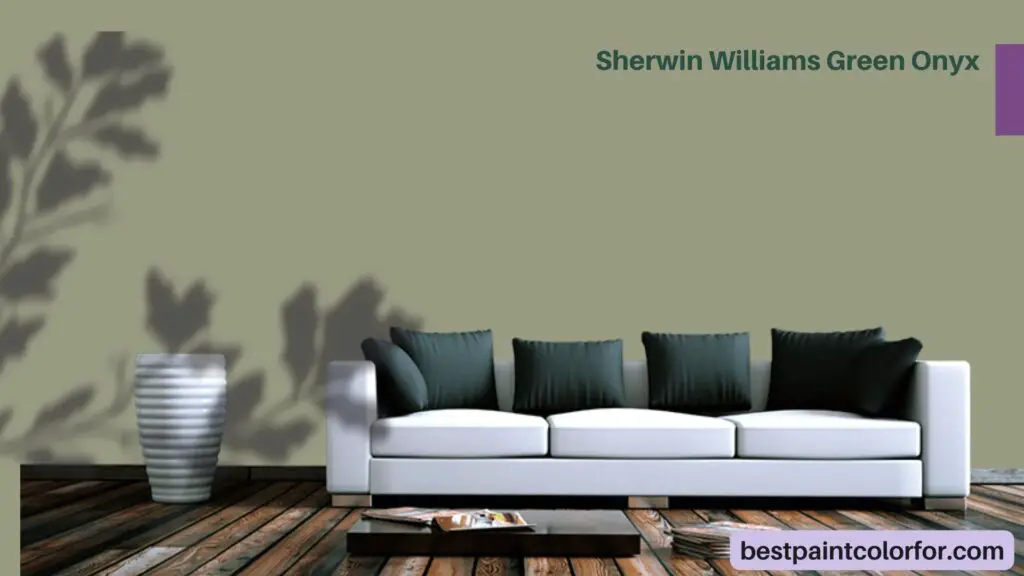
Benjamin Moore Thicket
This soft olive green with a subtle yellow undertone adds a sense of openness to rooms. Ideal for creating an airy feel, it complements light pastels and natural textures.
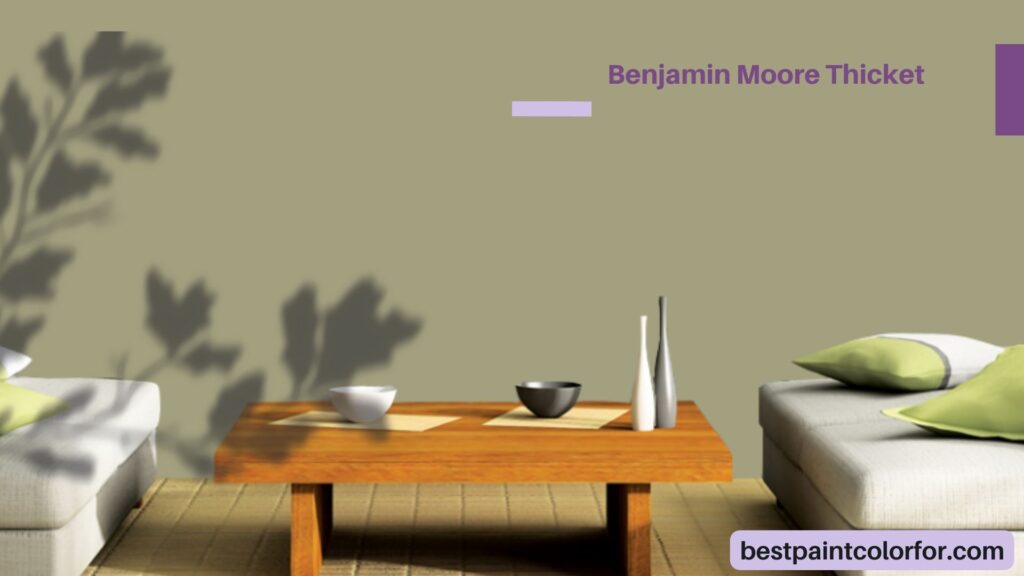
Sherwin Williams Lemon Verbena
Vibrant yet slightly muted, Lemon Verbena brings liveliness to interiors. It works well in modern settings, especially when paired with whites and metallic accents.
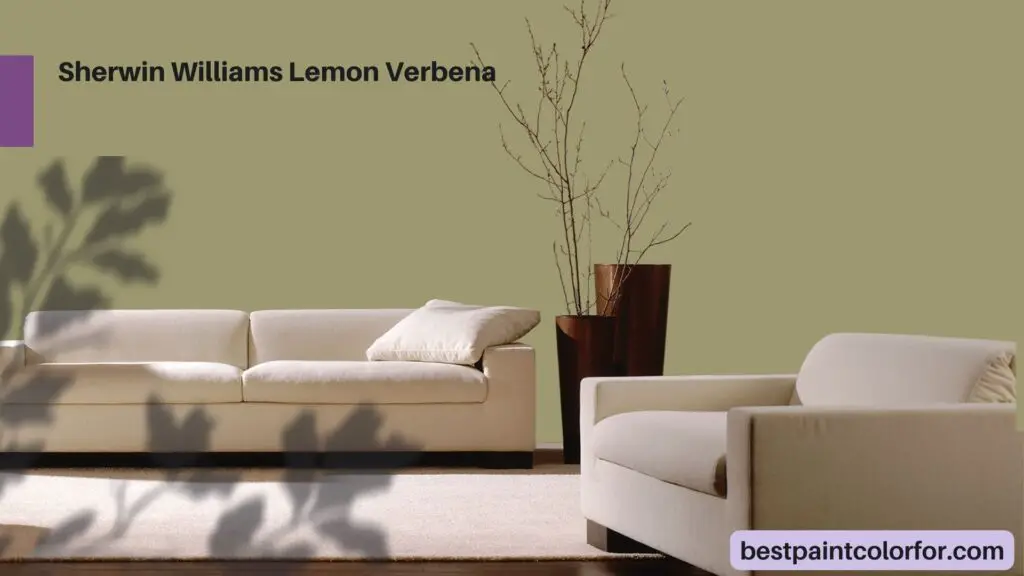
Benjamin Moore Martini Olive
With its vibrancy and playfulness, Martini Olive is perfect for making a statement. It suits eclectic spaces and pairs harmoniously with warm earthy colors.
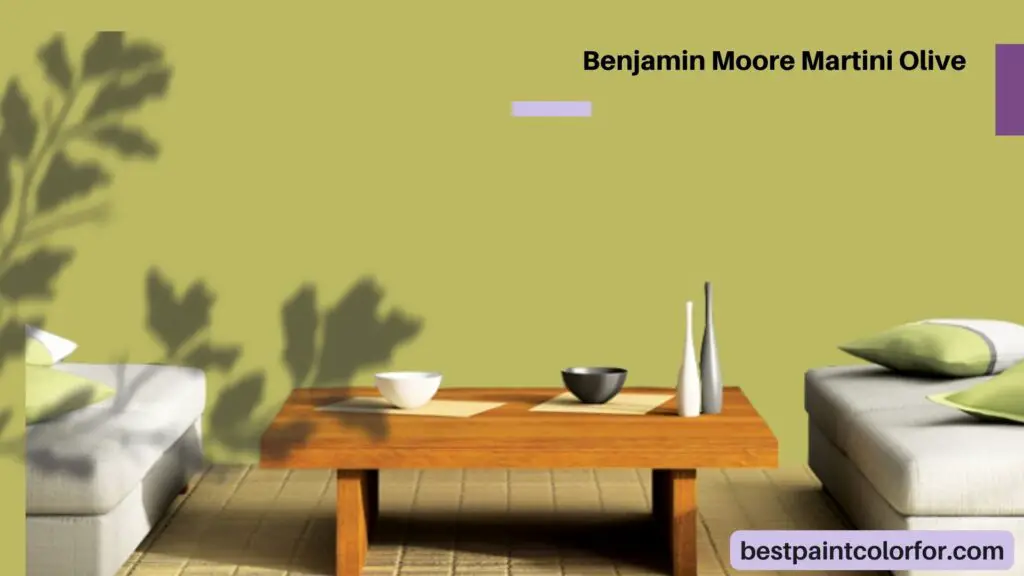
Feel Boring? Here’s a gift
Farrow and Ball Sap Green
Reflecting nature’s tranquility, Sap Green acts as a soft and rich accent, particularly in smaller spaces. It complements earthy tones and natural materials.
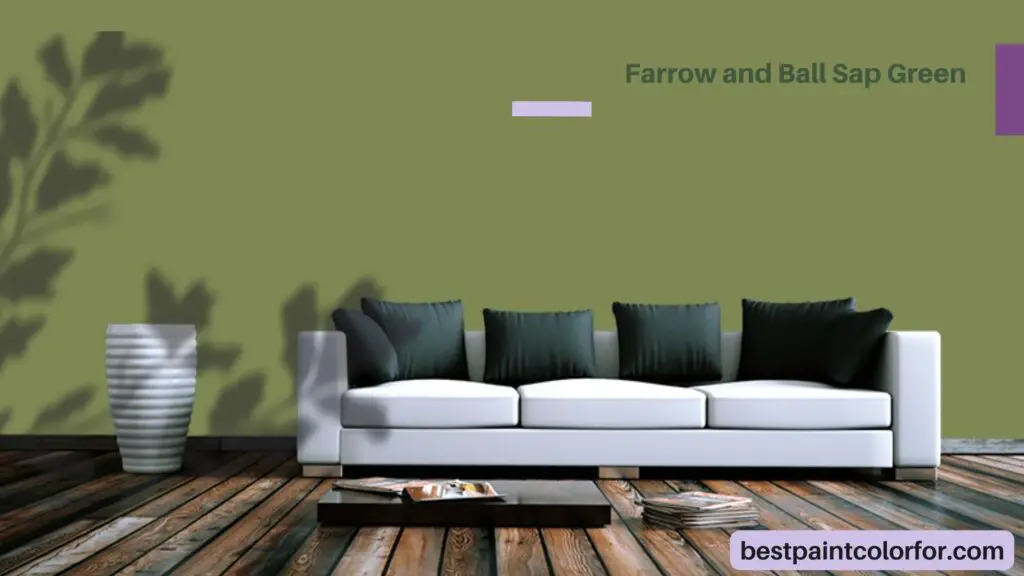
Sherwin Williams Lemongrass
Combining yellow and green tones, Lemongrass brings warmth and a natural glow. It pairs beautifully with creams and wood textures.
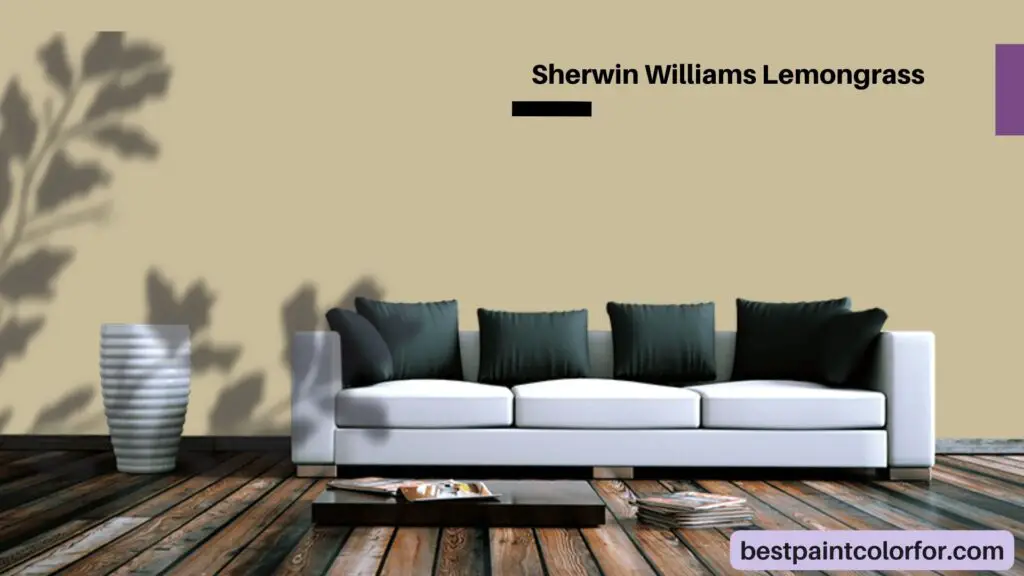
Sage Green Paint Colors
Behr Nature’s Gift
A deeper earthy green with blue and gray undertones, Nature’s Gift adds sophistication to interiors. It pairs well with whites and neutrals, creating a balanced look.
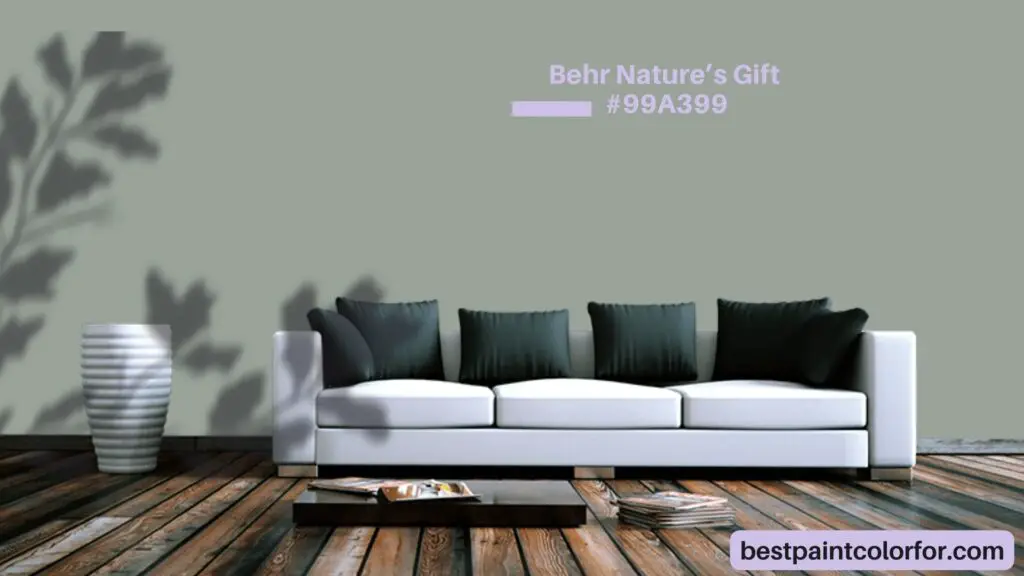
Sherwin Williams Liveable Green
With a hint of yellow or brown, Liveable Green adapts its appearance based on lighting. It complements warm tones and adds coziness to spaces.
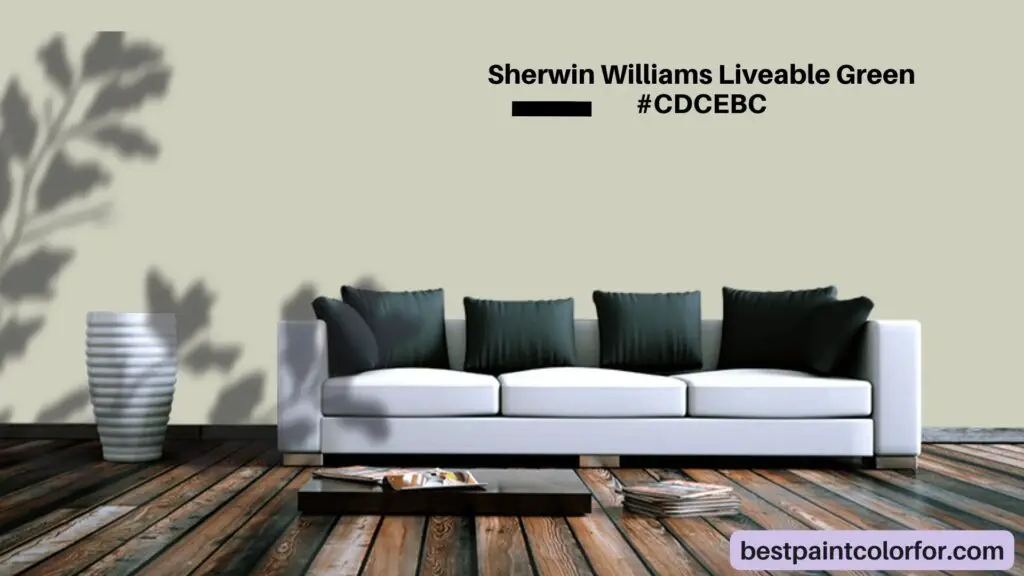
Benjamin Moore Sage Wisdom
Offering a brighter sage green with gray undertones, Sage Wisdom adds depth without feeling dark. It pairs elegantly with whites and soft pastels.
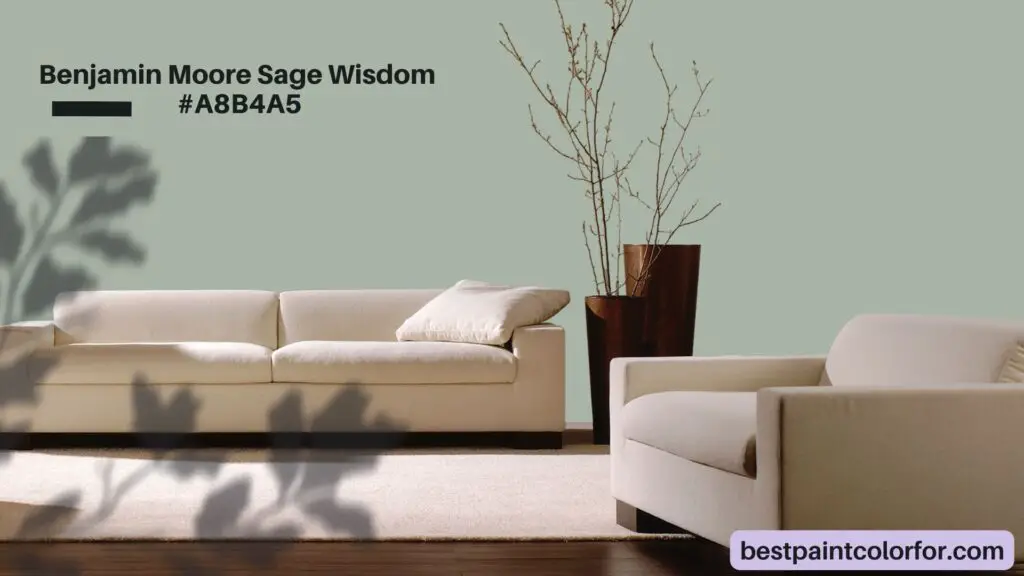
Benjamin Moore Saybrook Sage
This warm sage green with yellow undertones brings warmth and coziness to spaces. It works best with warm-toned flooring and coordinates with earthy hues.
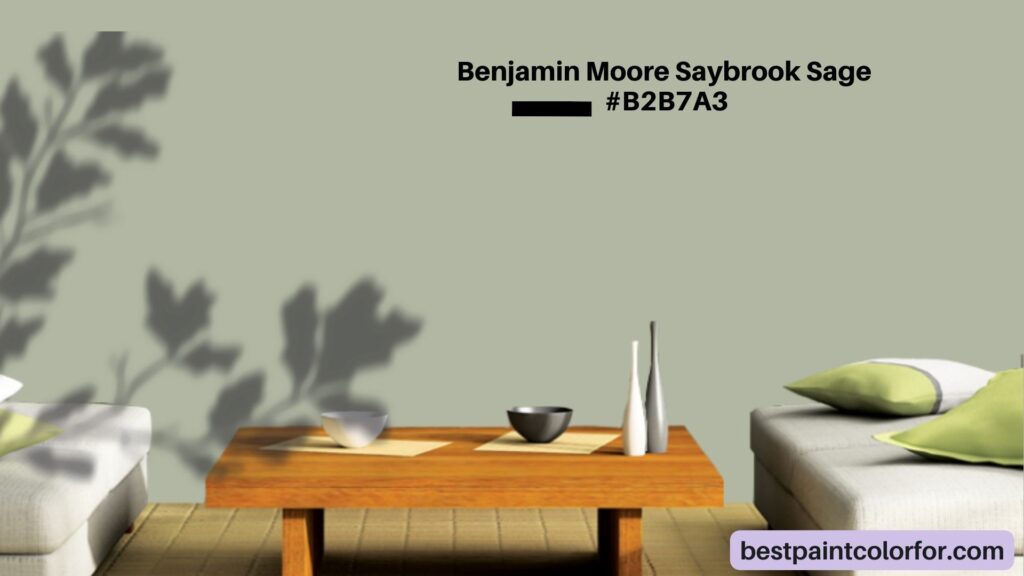
The bottom line
The comparison between olive green and sage green offers valuable insights for choosing the perfect paint color to transform your living space.
Each hue brings its distinct charm, whether it’s olive green’s warm and boho vibes or sage green’s serene and versatile appeal.
By understanding their undertones, intensity, and compatibility with various design styles, you can make an informed decision that resonates with your personal preferences and desired atmosphere.
Wait – That’s not all.
Key Takeaways:
- Undertones Matter: Olive green’s warm, yellow undertones create a cozy ambiance, while sage green’s cooler, blue or gray undertones evoke a sense of tranquility.
- Style Harmony: Olive green pairs well with earthy tones and warm neutrals, making it suitable for modern and Mediterranean styles. On the other hand, sage green complements coastal and farmhouse aesthetics, blending seamlessly with soft pastels and natural textures.
- Lighting Influence: Consider how lighting impacts the colors. Olive green can appear more yellow in warm lighting, while sage green may exhibit a bluish tint in cool lighting.
In the end, both olive green and sage green have the potential to elevate your home’s interior, reflecting your personal style and creating an inviting and appealing environment.







